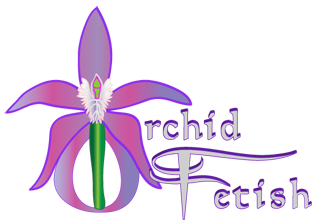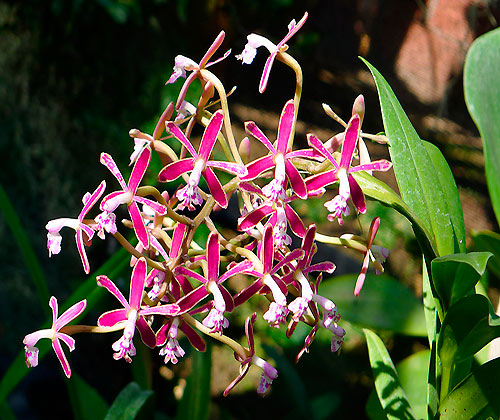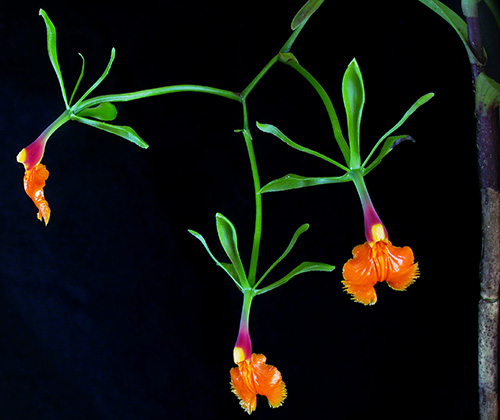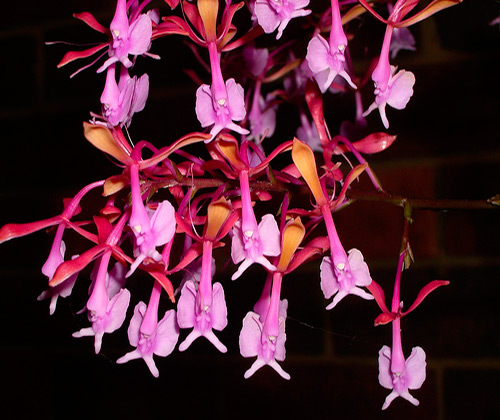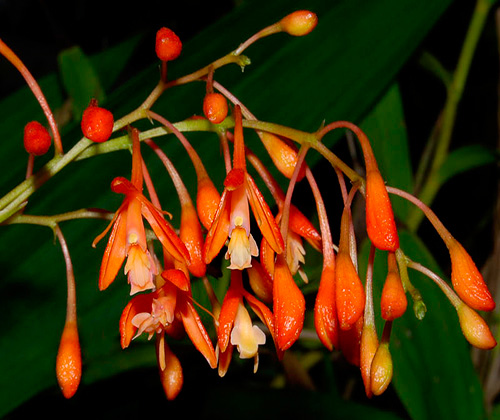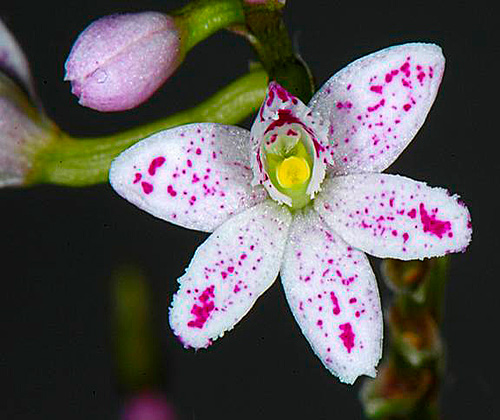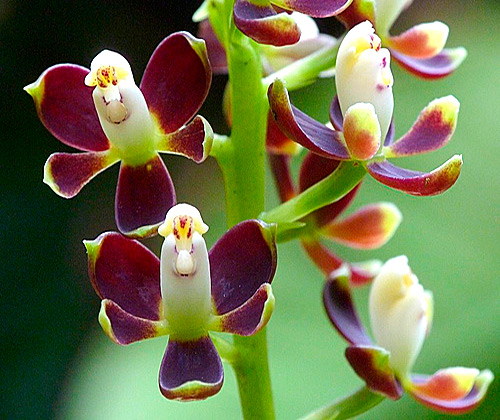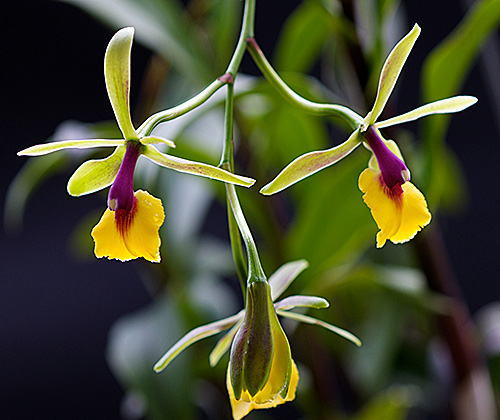Epidendrum Orchid Species
The Reed Orchid
TheEpidendrum genus contains over 1000 species, but today has a much clearer taxonomic definition, with its species now sharing a common ancestry. (They are no longer all epiphytic.) This captivating species are the commonly named Crucifix Orchids and are great for beginners! They produce large clusters of attractive flowers, each flower displaying a significant three-lobed lip, adnate to the column and resembling a cross, hence the common name. The blooms are varied, absolutely stunning and uniquely gorgeous in many colors and form! Epidendrum falls within sub-tribe Laeliinae, which makes them relatives of the better-known Cattleya orchid genus. They are often hybridized with other members of the Cattleya Alliance.
These Mexican natives require very little attention. There are at least four hundred species of epidendrum orchids. The tall, thin, reed-like growths constantly put forth new plantlets. They are free flowering and the colours range from white to yellow, pink, orange and purple, and all shades in between. It has an upright, clumping growth habit with roots emerging from the base of the stems, at or below soil level. They are relatively free of insects and flowers reliably throughout the year.
The leaves of epidendrum orchids which grow up the cane are leathery and the small, beautiful one inch mini cattleya shaped flowers appear in a globular heads of 30 to 40 flowers at a time. The long-lasting blooms are borne at the top of a long spike. Many species have a fragrance. After flowering, the spike may be left on the plant and it will generally flower again in a few months. The spike is also prone to producing a keikis (baby plant) after flowering. Once these keikis develop their own 2- to 4-inch-long roots, they can be detached and planted individually.
Light
Sufficient bright light or semi-full sunlight is paramount for their strong, robust and prolific growth, otherwise plants become weak, lanky and fail to bloom. Most epis appreciate intermediate to warm conditions, though several species growing at high elevation favour cooler climates and shady conditions.
Temperature
They can tolerate wide range of temperatures and are able to stand temperatures in the 100º range without suffering. During the growing season they require plenty of water and fresh air. Don't let the plants completely dry between watering.
Humidity & Water
Water regularly and abundantly during hot weather and especially during plant’s active growing period, keeping roots moist but not water-logged. Reduce water by allowing soil to dry slightly between waterings during flowering season or cooler weather. Knowing the type of water needed is beneficial. Some tolerate poor water quality, some do not and require rainwater or deionized water to thrive. Generally, warmer-growing species found at lower elevations are more salt-tolerant than cooler-growing species that receive pure rainwater at high-elevation. Epidendrums enjoy humidity and ample air circulation too.
Fertilizer
Epidendrium orchids require regular application and large amounts of fertilizer. Fertilize every two weeks with a diluted orchid food. When fertilized regularly they respond immediately with denser flower spikes, greener, stronger leaves and more robust roots.
Potting
These varieties can grow from 6 inches to 6 feet in height. Because of their tendency to grow tall, they are perfect for garden or greenhouse environments. If you want to grow one of these flowers in your home, you may want to consider a hybrid that is more compact.They are best grown in a compost consisting of bark, tree fern fiber and sphagnum moss. Potting media should be open and coarse, with emphasis on good drainage. Though tolerant of most soils, a potting mix of fir bark with any combination of coarse perlite, lava rocks, charcoal or gravel is ideal. Potting mixes can include tree fern, coarse sand, moss or coconut husks. If using a hanging basket with charcoal pieces, keep the plant moist. If ground-grown in the garden, use sandy loam soil.
